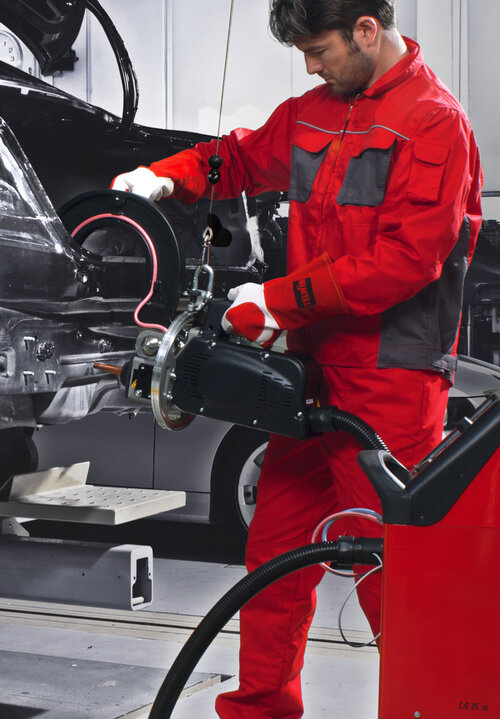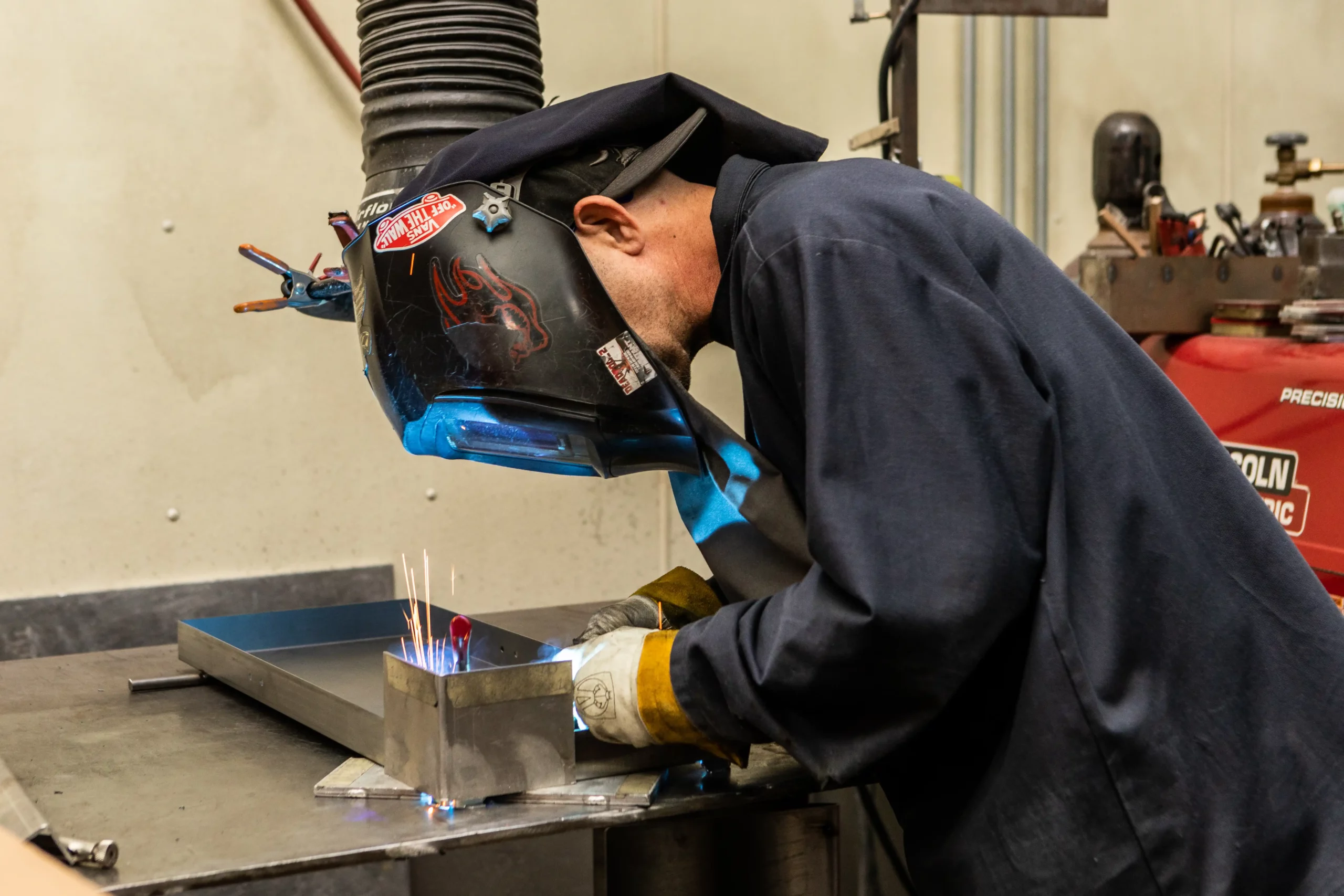Best practices to detect and fix weld flaws in Montana Mobile Welding and Repair Belgrade Welding
Usual Welding Repair Issues and Exactly How to Address Them Effectively
Welding repair work often experience a series of concerns that can threaten the honesty of the end product. Usual problems include inadequate penetration, porosity, and misalignment, to name a few. Each issue presents unique difficulties that call for specific techniques for resolution. Recognizing these concerns is important for welders aiming to enhance their end results and abilities. This discussion will certainly check out these typical welding repair work issues and reliable approaches to resolve them.
Insufficient Penetration
Inadequate infiltration takes place when the weld metal stops working to fully fuse with the base product, resulting in weak joints and prospective structural failings. This concern commonly originates from insufficient warm input, wrong electrode angle, or inappropriate welding speed. Welders may run into insufficient penetration because of a mistake of the required parameters for a specific product thickness or kind. Furthermore, contamination on the base product's surface area can prevent reliable bonding, worsening the problem. To address poor infiltration, welders ought to ensure appropriate setups on their equipment and preserve a tidy job surface. Routine evaluation of welds is suggested to identify any type of deficiencies early, enabling prompt improvements and the prevention of jeopardized architectural integrity in welded assemblies.
Porosity
Porosity is a common defect in bonded joints that shows up as little gas bubbles entraped within the weld metal. This defect can compromise the honesty of the weld, causing reduced strength and possible failing under anxiety. Montana Mobile Welding and Repair Belgrade Fabrication. Porosity commonly arises from contamination, moisture, or inappropriate welding techniques, which permit gases to leave right into the molten weld pool. To attend to porosity, welders need to ensure appropriate surface prep work, keep a tidy workplace, and use appropriate welding specifications. Furthermore, choosing the ideal filler product and securing gas can minimize gas entrapment. Normal inspection and testing of welds can aid determine porosity early, assuring timely restorative actions are taken, thus maintaining the top quality and integrity of the welded structure
Misalignment
Imbalance in welding can emerge from numerous elements, including inappropriate setup and thermal expansion. Understanding the origin is necessary for efficient resolution. Numerous modification methods are available to realign components and ensure structural integrity.
Causes of Imbalance
Welding misalignment usually comes from a selection of underlying issues that can endanger structural integrity. One main cause is inappropriate fit-up of parts prior to welding, which can lead to gaps and irregular surface areas. Variations in thermal development during the welding procedure can likewise result in distortion, specifically if the materials being joined have different coefficients of development. Additionally, inadequate fixturing and securing might fall short to hold elements firmly in location, resulting in activity during welding. Inadequately kept equipment, consisting of welding makers and devices, may present variances in the weld bead, additional contributing to imbalance. Finally, operator mistake, stemming from not enough training or experience, can also play a substantial role in developing misaligned welds.
Correction Methods Offered
Addressing imbalance effectively requires a combination of corrective methods tailored to the particular problems available. One common method is the use of fixtures or jigs to hold components in the correct position during welding, guaranteeing regular placement. In addition, pre-heating the materials can help in reducing distortion and improve fit-up. For significant misalignment, mechanical realignment strategies, such as using hydraulic jacks or clamps, can be employed to deal with the placement prior to welding. Post-weld warm therapy might likewise be required to ease stresses triggered by misalignment. Lastly, cautious evaluation and adjustment throughout the configuration phase can prevent imbalance problems from becoming significant troubles, promoting a smoother welding procedure and improving overall architectural honesty.
Distortion
Distortion is a typical obstacle in welding that can occur from various factors, consisting of uneven heating & cooling. Recognizing the root causes of distortion is crucial for executing efficient avoidance strategies. Addressing this problem not just improves structural stability however likewise improves the total quality of the weld.
Root causes of Distortion
When subjected to the intense warm of welding, materials frequently go through adjustments that can lead to distortion. This sensation largely arises from thermal expansion and contraction during the welding process. As the weld area heats up, the material broadens; upon air conditioning, it gets, which can develop inner anxieties. On top of that, unequal home heating throughout a workpiece can worsen these anxieties, causing bending or flexing. The kind of material also he has a good point plays a substantial duty; steels with differing thermal conductivity and coefficients of expansion may react in a different way, resulting in unforeseeable distortions. Inadequate joint layout and insufficient fixturing can contribute to imbalance during welding, enhancing the likelihood of distortion. Recognizing these reasons is vital for effective welding repair service and prevention approaches.
Prevention Techniques
Efficient avoidance methods for distortion during welding focus on regulating warmth input and ensuring appropriate joint style. Preserving a consistent warm input helps to decrease thermal development and contraction, which can bring about distortion. Making use of techniques such as pre-heating the workpiece can additionally decrease the temperature gradient, promoting consistent heating. Furthermore, choosing ideal joint styles, such as T-joints or lap joints, can boost stability and lower anxiety concentrations. Implementing appropriate fixturing to secure the work surfaces in position additionally help in maintaining placement during the welding procedure. Ultimately, staggered welding sequences can distribute heat more uniformly, avoiding local distortion. By applying these strategies, welders can substantially decrease the chance of distortion and improve the general top quality of their welds.
Cracking
Splitting is an usual issue run into in welding repairs, commonly arising from numerous factors such as incorrect air conditioning prices, material choice, or poor joint prep work. The occurrence of cracks can significantly jeopardize the honesty of the weld, bring about prospective failures throughout procedure. To resolve this issue, welders should first evaluate the source, making sure that products work and suitably selected for the certain application. Furthermore, managing the air conditioning rate during the welding process is vital; fast cooling can cause stress and bring about splitting. Proper joint design and preparation also contribute to decreasing the threat. Implementing these strategies can boost weld quality and resilience, ultimately reducing the chance of fracturing in ended up weldments.

Insufficient Fusion
A significant issue in welding repairs is insufficient fusion, which occurs when the weld metal does not adequately bond with the base product or previous weld passes - Montana Mobile Welding and Repair Belgrade Welding. This flaw can cause weak points in the joint, possibly endangering the honesty of the bonded structure. Aspects contributing to insufficient blend consist of not enough heat input, improper welding method, and contamination of the surfaces being signed up with. To address this problem effectively, welders must guarantee proper pre-weld cleansing click for more info and surface area preparation, as well as adjust their welding parameters to attain sufficient penetration and fusion. Normal examination throughout the welding process can also aid identify incomplete fusion early, enabling for prompt rehabilitative measures to improve the overall high quality of the weld
Overheating
While welding fixings can boost structural honesty, overheating presents a significant obstacle that can result in product destruction. Extreme heat during welding can modify the mechanical residential properties of steels, causing minimized toughness, boosted brittleness, and warping. This phenomenon is especially important in high-stress applications where architectural reliability is vital. Recognizing getting too hot can entail visual evaluations for discoloration or distortion, along with checking temperature level throughout the welding procedure. To mitigate the risks related to overheating, welders need to employ appropriate strategies, such as controlling heat input, readjusting travel rate, and using ideal filler products. Additionally, executing pre- and post-weld heat therapies can assist restore product residential or commercial properties and improve the general top quality of the repair, making sure long-term efficiency and security.
Regularly Asked Questions
What Are the Usual Indications of a Welding Issue?

How Can I Evaluate My Welds for High quality?
To check welds for top quality, one can make use of visual evaluations, ultrasonic testing, and radiographic methods. Each method ensures structural honesty, recognizes flaws, and validates adherence to defined criteria, inevitably boosting the integrity of the bonded joints.
What Security Precautions Should I Take While Welding?
When welding, one should focus on safety by wearing ideal individual protective equipment, making certain appropriate air flow, securing combustible products away, maintaining a tidy office, and recognizing environments to protect against mishaps and injuries.
Can I Fix a Weld Without Renovating the Entire Joint?
Repairing a weld without redoing the whole joint is possible, depending on the damage (Welding). Strategies such as grinding, adding filler material, or utilizing a welding process can effectively resolve particular problems while maintaining the bordering framework
What Tools Are Crucial for Efficient Welding Repair Works?
Vital tools for reliable welding fixings include a welding machine, cord brush, mill, protective gear, clamps, and filler products. Each tool plays a vital duty in guaranteeing quality and safety during the fixing procedure. Porosity normally arises from contamination, dampness, or inappropriate welding techniques, which enable gases to run away into the molten weld swimming pool. Poorly kept devices, consisting of welding devices and devices, might introduce disparities in the weld grain, more contributing to misalignment. When subjected to the intense warm of welding, products often go through modifications that can lead to distortion. Fracturing is a common issue experienced in welding fixings, typically resulting from numerous variables such as inappropriate air conditioning prices, material selection, visit this site right here or inadequate joint preparation. A considerable problem in welding repair services is insufficient blend, which takes place when the weld metal does not effectively bond with the base material or previous weld passes.